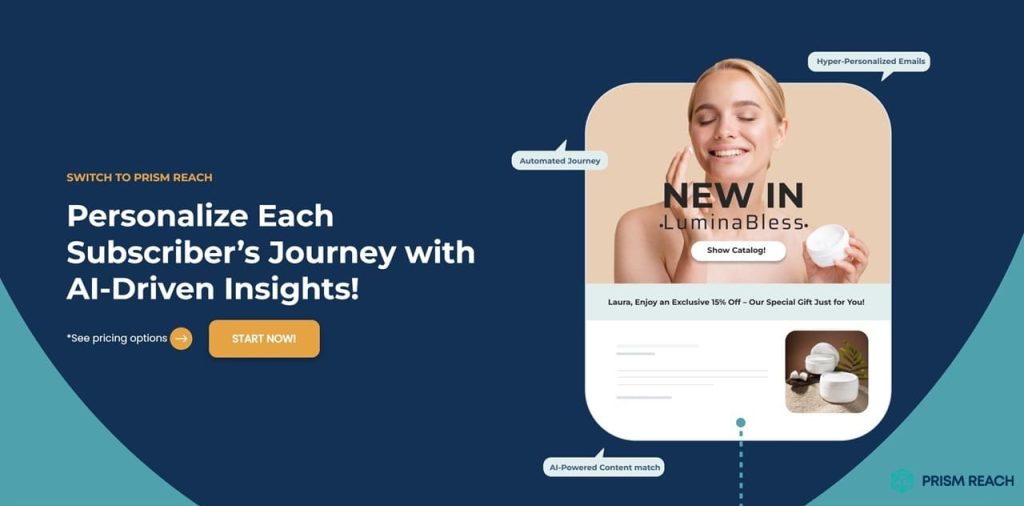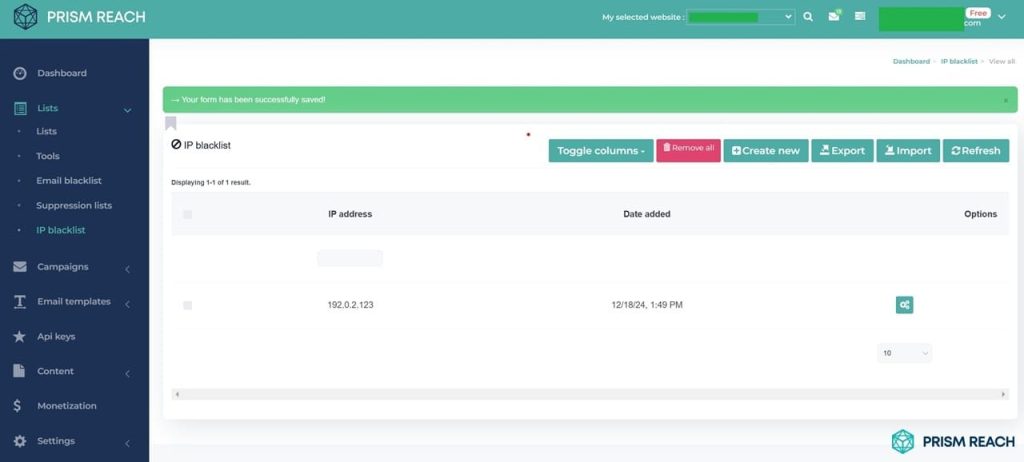Email marketing remains one of the most effective channels for customer engagement and revenue generation in today’s digital landscape. However, with inboxes becoming increasingly crowded and consumer expectations evolving, the challenge lies not just in reaching your audience but in compelling them to take action. Understanding how email marketing campaigns work is crucial for marketers aiming to create impactful and successful campaigns that drive meaningful results.
As we navigate through 2024, the importance of optimizing key metrics like Click-Through Rates (CTR) and Open Rates has never been more pronounced. With the rise of AI-driven marketing tools and evolving consumer behaviors, marketers must adapt their strategies to stay ahead. This comprehensive guide delves into the mechanics of email marketing campaigns, uncovering both foundational practices and lesser-known strategies that can significantly enhance your email marketing efforts.
Key Facts
- Personalization can increase email open rates by up to 26% and click-through rates by 14%.
- Mobile-optimized emails can increase unique mobile clicks by 15%.
- A/B testing subject lines can lead to a 49% higher open rate for the winning variation.

The Anatomy of Successful Email Marketing Campaigns
At its core, an email marketing campaign is a coordinated set of individual email messages sent over a specific period, with a specific purpose, to a targeted group of recipients. However, the sophistication of modern campaigns goes far beyond simple mass emailing.
“The key to successful email marketing lies in understanding your audience and delivering value with every message,” says Sarah Johnson, a digital marketing expert. “It’s about creating a conversation, not just broadcasting information.”
Building a Quality Email List
The process begins with building a quality email list. This involves attracting subscribers through various channels such as website sign-up forms, social media, and lead magnets. These methods are crucial for organically growing a subscriber base that is genuinely interested in your content or offerings.
- Website Sign-Up Forms: Strategically place sign-up forms on high-traffic pages to capture visitor information.
- Social Media Promotions: Utilize your social media platforms to promote newsletter subscriptions.
- Lead Magnets: Offer valuable incentives like free ebooks, exclusive content, or discounts in exchange for email addresses.
Once a list is established, segmentation becomes crucial. By dividing subscribers based on demographics, behaviors, or preferences, marketers can tailor their messages for maximum relevance, ensuring that each recipient receives content that resonates with their specific interests or needs.
Crafting Compelling Content
Content creation is the next vital step. This includes crafting compelling subject lines, engaging body copy, and clear calls-to-action (CTAs). The subject line serves as the first point of contact, determining whether the email will be opened or ignored. It should be concise, intriguing, and reflective of the email’s content.
- Subject Lines: Create intriguing, personalized, and value-driven subject lines to maximize impact.
- Body Copy: Deliver on the promise of the subject line with valuable information or offers that keep the reader engaged.
- Calls-to-Action: Use clear and persuasive CTAs to guide the reader towards the desired action, whether it’s making a purchase, reading a blog post, or signing up for an event.
Leveraging Automation for Timely Communication
Automation plays a significant role in modern email marketing campaigns. Triggered emails, such as welcome series, abandoned cart reminders, or post-purchase follow-ups, are sent automatically based on specific user actions or time intervals. This ensures timely, relevant communication without constant manual intervention.
- Welcome Series: Introduce new subscribers to your brand and set expectations for future communications.
- Abandoned Cart Reminders: Remind users of items left in their cart, often offering incentives to encourage purchase completion.
- Post-Purchase Follow-Ups: Send order confirmations, shipping updates, and requests for product reviews after a purchase.
Analyzing and Optimizing Campaign Performance
Analytics and optimization are the final pieces of the puzzle. By tracking metrics such as open rates, click-through rates, and conversion rates, marketers can gain insights into campaign performance and make data-driven decisions to improve future efforts.
- Open Rates: Measure the effectiveness of subject lines and sender reputation.
- Click-Through Rates: Assess the relevance and appeal of email content.
- Conversion Rates: Directly tie email performance to business objectives, showing how effectively the campaign drives desired actions.
- A/B Testing: Continuously test different elements of your emails to refine your approach and optimize performance.
Hidden Gem Strategies
Beyond the foundational strategies, there are lesser-known but highly effective tactics that can significantly boost your email marketing metrics. Here are five hidden gem strategies that leverage unique approaches to maximize engagement and drive conversions:
1. Hyper-Personalization with AI
Leverage AI tools to analyze user data for hyper-personalization. By tailoring content based on individual preferences, behaviors, and historical interactions, you can create emails that resonate deeply with recipients, leading to higher engagement and conversion rates.
- Advanced Segmentation: Use AI to create highly detailed segments based on a multitude of data points.
- Personalized Recommendations: Deliver product or content recommendations that align with each subscriber’s unique interests.
- Behavioral Triggers: Send emails triggered by specific user actions, ensuring timely and relevant communication.
2. Interactive Email Elements
Incorporate interactive features such as polls, surveys, or embedded videos directly in your emails. This transforms static emails into engaging experiences, encouraging recipients to interact without leaving their inbox, which can significantly boost CTR.
- Polls and Surveys: Gather valuable feedback while keeping subscribers engaged.
- Embedded Videos: Provide rich media content that can capture attention and convey messages effectively.
- Interactive CTAs: Use elements like clickable image carousels or interactive buttons to drive actions.
3. Dynamic Content Blocks
Use dynamic content that changes based on user behavior or demographics within the email. For instance, showcasing products based on past purchases helps maintain relevance and encourages action.
- Real-Time Updates: Display content that updates based on the latest data, such as inventory levels or user activity.
- Personalized Greetings: Adjust the greeting based on subscriber data, making each email feel unique.
- Conditional Content: Show or hide content blocks based on specific criteria, ensuring that each subscriber sees only the most relevant information.
4. Preference Centers for Subscription Management
Create a preference center where subscribers can choose the type of content they want to receive and how often. This empowers users and can lead to improved engagement rates as they receive content tailored to their interests.
- Content Preferences: Allow subscribers to select topics or categories they are interested in.
- Frequency Options: Let users choose how often they receive emails, reducing unsubscribe rates.
- Personal Information Management: Enable subscribers to update their personal information, ensuring data accuracy and relevance.
5. A/B Testing Culture
Foster a culture of A/B testing within your marketing team. Encourage team members to propose hypotheses and test different elements of emails (like subject lines or CTAs) to learn what resonates best with your audience.
- Regular Testing: Make A/B testing a routine part of your email marketing strategy.
- Collaborative Approach: Encourage team members to share insights and results from tests.
- Data-Driven Decisions: Use the results from A/B tests to inform and refine your overall email marketing strategy.

Innovative Solutions by Prism Reach
While implementing these strategies can significantly improve your email marketing metrics, leveraging advanced technology can take your campaigns to the next level. This is where Prism Reach comes into play. Our AI-powered SaaS solution is designed to revolutionize your email marketing efforts by automating and optimizing many of these CTR and open rate-boosting strategies.
Key Benefits of Prism Reach:
- Enhanced Personalization: Prism Reach leverages AI to create detailed user avatars, allowing for highly personalized content that aligns with each subscriber’s unique preferences and behaviors.
- Optimized Send Times: The platform uses predictive analytics to determine the best times to send emails to each individual subscriber, maximizing the chances of your emails being opened and engaged with.
- Advanced A/B Testing: Prism Reach simplifies the A/B testing process, enabling marketers to test unconventional elements efficiently and implement the most effective variations across their campaigns.
Prism Reach’s core functionality revolves around its proprietary AI technology, which clusters website content and social media posts into relevant categories. This AI uses a variety of data points to create detailed user avatars, enabling personalized newsletter content that incorporates factors such as location, engagement history, and predicted interests. The system’s ability to analyze vast amounts of data allows for highly targeted marketing strategies.
Upgrade Your Email Marketing with AI Personalization!
Benefits of Prism Reach in Purpose-Driven Marketing
- Advanced Personalization: Prism Reach utilizes AI to deliver content that is highly relevant to each subscriber, enhancing engagement and aligning with campaign purposes.
- Optimization Tools: Features like AI-powered scheduling and adaptive testing ensure that your emails are sent at the optimal times and are continuously refined for better performance.
- Data Security: Prism Reach ensures GDPR compliance by hosting data within Europe and adhering to the highest standards of data protection, building trust with your audience.
6. Utilize Prism Reach’s AI-Powered Personalization
Prism Reach’s AI-driven personalization capabilities enable you to deliver highly relevant content based on subscriber behavior and preferences. By analyzing first-party data, Prism Reach ensures that each email is tailored to the individual, enhancing the user experience while maintaining privacy compliance.
7. Implement Adaptive Testing with Prism Reach
Prism Reach’s adaptive testing feature allows you to test multiple variations of your email content simultaneously. Unlike traditional A/B testing, adaptive testing automatically adjusts traffic distribution based on performance, identifying the best-performing content more efficiently. This ensures that your emails are always optimized for maximum engagement and conversion.
8. Leverage Prism Reach’s Data Security Features
With Prism Reach, data security is paramount. The platform includes advanced security measures such as encryption and regular security audits, ensuring that subscriber data is protected against breaches and unauthorized access. This commitment to data security builds trust with your audience and aligns with compliance requirements.

Conclusion
Understanding how email marketing campaigns work is crucial in today’s digital-first world. From list building and segmentation to content creation and automation, each component plays a vital role in the success of a campaign. As technology continues to advance, the integration of AI and machine learning is pushing the boundaries of what’s possible in email marketing.
By implementing the strategies outlined in this article and leveraging innovative tools like Prism Reach, businesses can create more engaging, personalized, and effective email marketing campaigns. In an era where customer attention is at a premium, mastering the mechanics of email marketing is not just an advantage—it’s a necessity for sustained growth and success.
Prism Reach represents a significant advancement in personalized email marketing technology. By leveraging AI to understand and predict subscriber preferences, Prism Reach delivers content that is not only relevant but also timely, enhancing the overall impact of digital marketing campaigns and fostering stronger connections between publishers and their audiences.
Ultimately, the key to successful email marketing lies not just in the tools chosen but in how effectively they are leveraged to create meaningful connections with your audience. Whether creating detailed campaign briefs, leveraging interactive elements, or utilizing AI-driven insights, the focus should remain on delivering value and fostering engagement with your subscribers. With persistence, analysis, and the right tools, you can transform your email marketing into a powerful engine for growth and customer engagement.